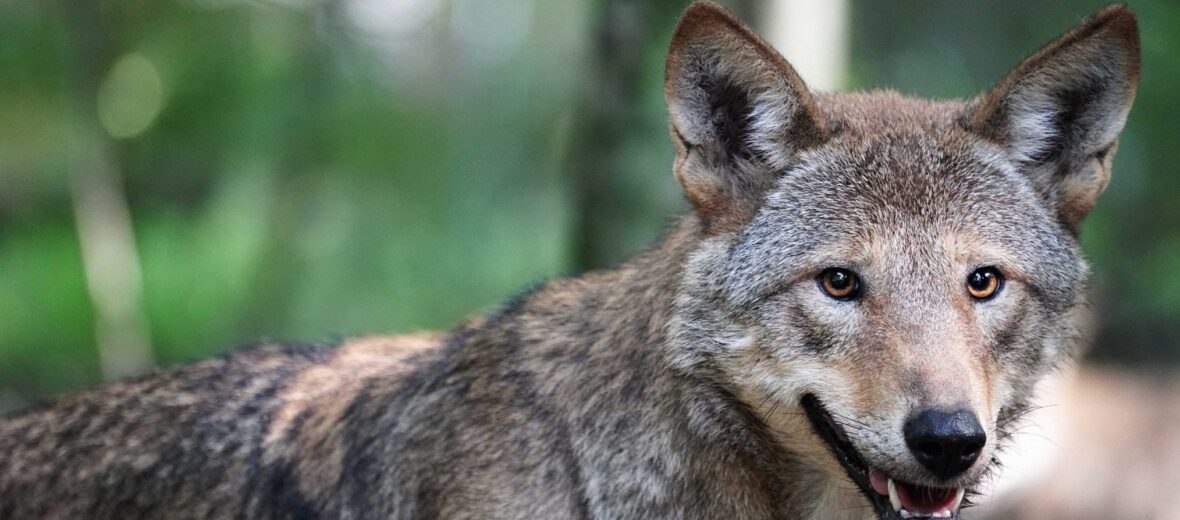
The red wolf is the world’s most endangered canid, having lost approximately 99.7% of its original territory. Sadly, due to poor management, there are only about 14 known pure red wolves left in the wild. Currently, there are lawsuits to force FWS (Fish & Wildlife Service) and NCWRC (North Carolina Wildlife Resources Commission) to protect this Critically Endangered species. Without protection and breeding programs, this species is doomed to extinction! The red wolf is listed as critically endangered by the IUCN.
First the Stats…
Scientific name: Canis rufus
Weight: Up to 80 lbs.
Length: Up to 63 inches, plus their tail
Height: Up to 26 inches, at the shoulder
Lifespan: Up to 15 years
Now on to the Facts!
1.) These critters are also known as Florida black wolves or Mississippi Valley wolves.
2.) There are currently an estimated 155 captive red wolves residing at 37 captive breeding facilities across the US.
3.) Red wolves are mostly crepuscular (active at dawn and dusk). However, they become diurnal (active during the day) during the winter months.
4.) They prey on white tailed deer, rabbits, raccoons, nutrias, and other rodents.
5.) The red wolf communicates via scent marking, body language, and a range of vocalizations. These vocalizations include the typical howl, a series of barks, growls, and yips.
But wait, there’s more on the red wolf!
6.) A red wolf pack consists of 5 – 6 individuals (the breeding pair and their offspring) and will typically hunt in the same area for about 7 – 10 days, then switch to a new area.
7.) Breeding season lasts from January – March.
Did you know…?
Red wolves can run up to 30 mph, while chasing prey!
8.) Females will birth 3 – 6 pups, with more being born on rare occasions.
9.) Red wolves are what is termed an umbrella species, in that they help increase the overall health of their environment.
10.) Their only known competition is from coyotes and grey wolves.
Now a Short Red Wolf Video!
Also, check out the Critter Science YouTube channel. Videos added frequently!
Want to suggest a critter for me to write about? Let me know here.



